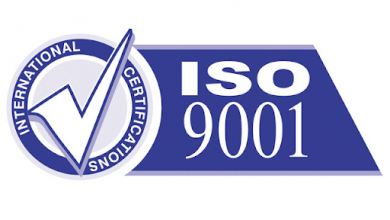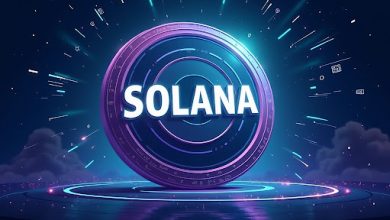AS9100 in the Space Age: Quality Management for Commercial Space Manufacturing

Commercial space moves fast. Parts are scarce. Risk is real. A strong quality system keeps missions on track.
AS9100 is the aerospace quality standard. It covers aviation, space, and defense work. The current release is Revision D from 2016. It adds controls that fit high‑risk hardware.
What AS9100 means for space
AS9100 builds on ISO 9001. It adds sector needs. That includes product safety, configuration control, and counterfeit parts control. These additions matter for rockets and spacecraft.
Many primes require AS9100 in contracts. Space startups now face the same bar. The standard helps align design, build, and test. It also helps prove due diligence to customers.
Key clauses you will use every day
- Product safety across the life cycle.
- Risk in operations, not only planning.
- Configuration management for hardware and software.
- Counterfeit parts prevention and reporting.
The shift to IA9100
A new revision is in work. IAQG plans to rename AS9100 to IA9100. The update will align with the next ISO 9001 release. Timelines point to 2026–2027.
An interim update to 9100 is also being discussed. Some sources expect a 2025 ballot. Treat this as near term housekeeping, not a full rewrite. Keep tracking IAQG notices.
What should you do now? Keep to AS9100D. Watch IAQG and your registrar for dates. Plan to review gaps once IA9100 is final.
Core practices that fit space builds
Design and risk live together
Use risk‑based thinking from concept. Tie hazards to design choices. Capture mitigations in drawings, specs, and tests. Review risks at each gate.
Configuration control protects the vehicle
Freeze baselines before builds. Control changes with impact checks. Track serial numbers, firmware, and test data. Keep a clean, linked record.
Product safety is a system, not a task
Define safety roles and authority. Build safety into work instructions. Include human factors in root cause reviews. Train teams on safety critical steps.
Counterfeit parts prevention is mandatory
Buy from authorized sources. Verify lots on receipt. Use marking, test, and trace. Report suspect parts and quarantine fast.
Additive manufacturing and new processes
Space programs now fly printed metal parts. NASA issued guidance for laser powder bed fusion. These documents set process and qualification steps. Fold them into your QMS.
Link traveler steps to MSFC‑STD‑3716 and MSFC‑SPEC‑3717. Qualify machines and staff. Lock in parameters. Keep build records for each lot. Use these as controlled references.
For new processes, mirror this model. Write clear specs. Qualify the method. Prove repeatability before flight use. NASA guidance shows the pattern.
Plan and prove before you fly: APQP and PPAP
AS9145 gives a plan‑do‑check path. It unites APQP and PPAP. Aerospace uses it with AS9100. The goal is stable launch‑rate production.
Use these core APQP outputs:
- Process flow, PFMEA, and control plan.
- MSA and capability evidence on key features.
- Production readiness review results.
- PPAP package with First Article data as needed.
Supplier control in a sprawling space supply chain
The OASIS database lists certified suppliers. It shows certificates and audit data. Use it for due diligence and vendor approval. Assign an OASIS admin for your site.
Flow down clear requirements. Include safety, special processes, and counterfeit control. Audit high‑risk suppliers on site. Track delivery and escapes with care.
Fit with NASA mission assurance
NASA’s NPR 8735.2C sets QA program needs. It stresses early life‑cycle QA and supplier oversight. Changes in 2023 updated parts on counterfeit control. Space contractors often see these flowed down.
Map your AS9100 controls to NPR 8735.2C. Align gates, reviews, and records. Show how your QMS meets each flowed clause.
Metrics that matter
Track a small set that drives action:
- First pass yield by work center.
- Nonconformance rate and escape rate.
- Corrective action closure time.
- Supplier OTD and PPM.
- Special process rework rate.
Tie each metric to an owner. Set limits and response plans. Review trends at fixed intervals. Link trends to risk and design changes.
Audit ready, every day
Keep procedures short and clear. Train to the job, then verify skill. Use layered process checks. Fix small issues fast to avoid repeats.
For internal audits, use 9101 methods. Audit the process, not only clauses. Sample records that prove control and change. Use findings to improve flow.
A simple roadmap for first‑time space firms
- Set scope and goals. Define products, sites, and people.
- Map processes end‑to‑end. Show inputs, outputs, and risks.
- Write only the documents you need. Keep control tight.
- Stand up change control and configuration tools early.
- Build supplier control with OASIS checks and clear flowdowns.
- Pilot APQP on one product line. Lock in controls.
- Run internal audits and management review. Fix gaps.
- Choose a registrar and plan the stage audits.
- Use data to drive the next cycle of gains.
Tools and help
An eQMS speeds control of documents and records. Choose tools that support APQP, PPAP, and FAI. Confirm they handle serial numbers and lot trace. Evaluate training and change workflows.
If you want support, you can explore partners like Harrington Group International. Pick a team with aerospace experience. Ask for clear deliverables and timelines.
Closing thoughts
Space hardware leaves little room for error. AS9100 gives a proven base for control. With APQP, strong supplier oversight, and clear records, teams can move fast and stay safe. The move to IA9100 is coming. Build a system that can adapt when the new text lands.





